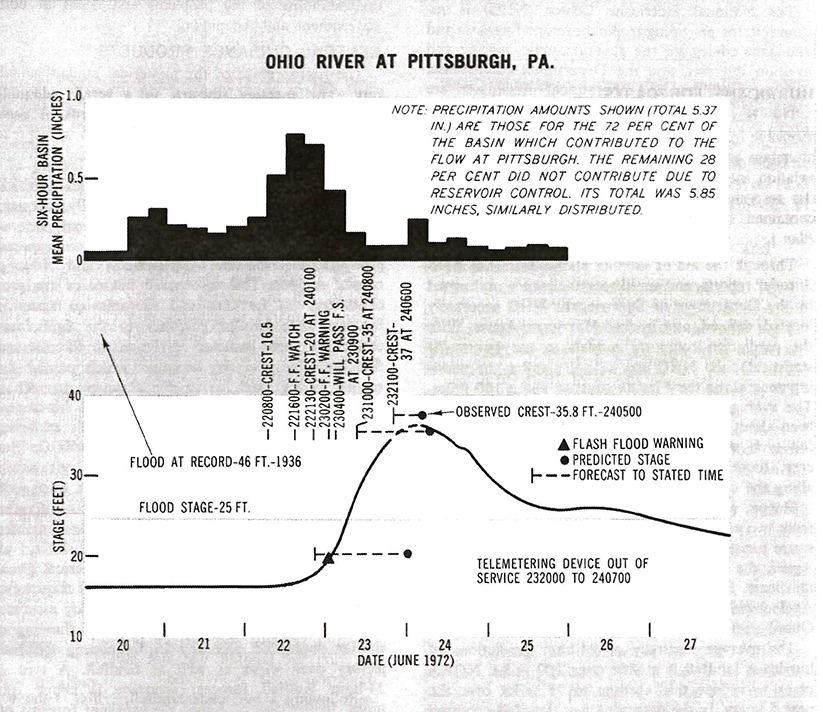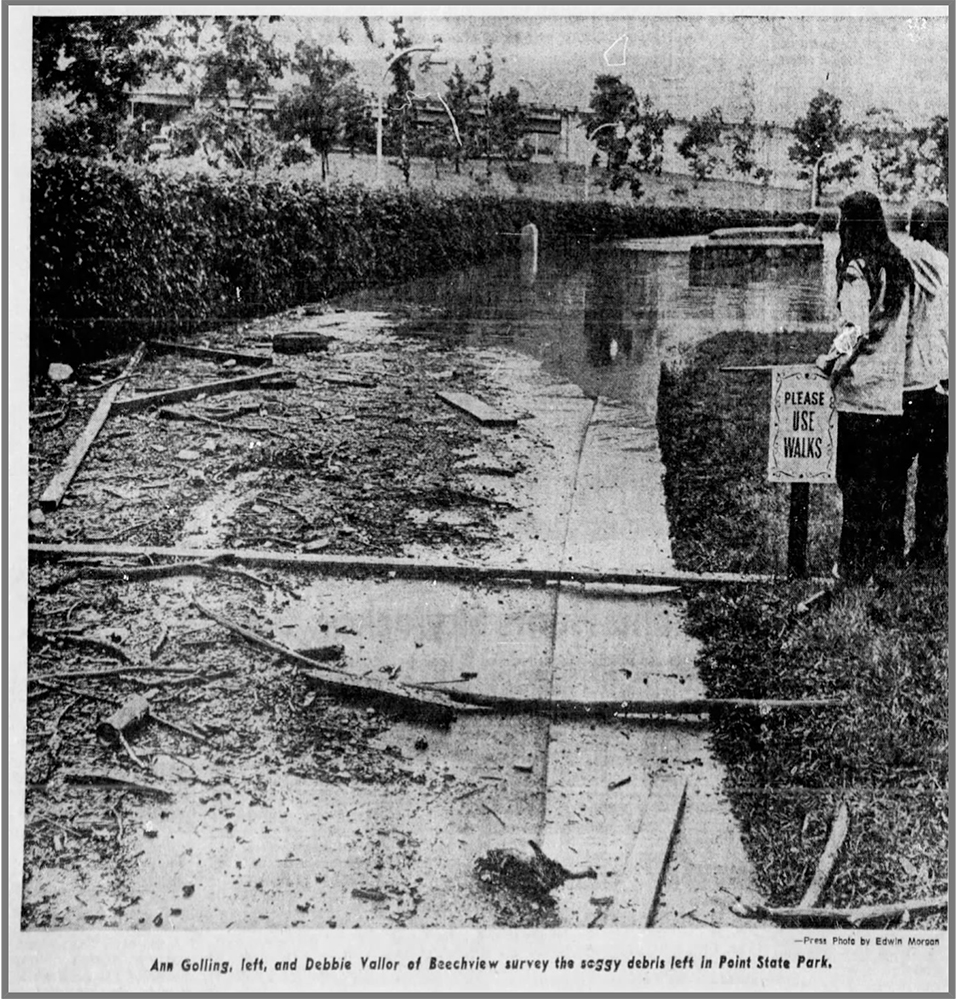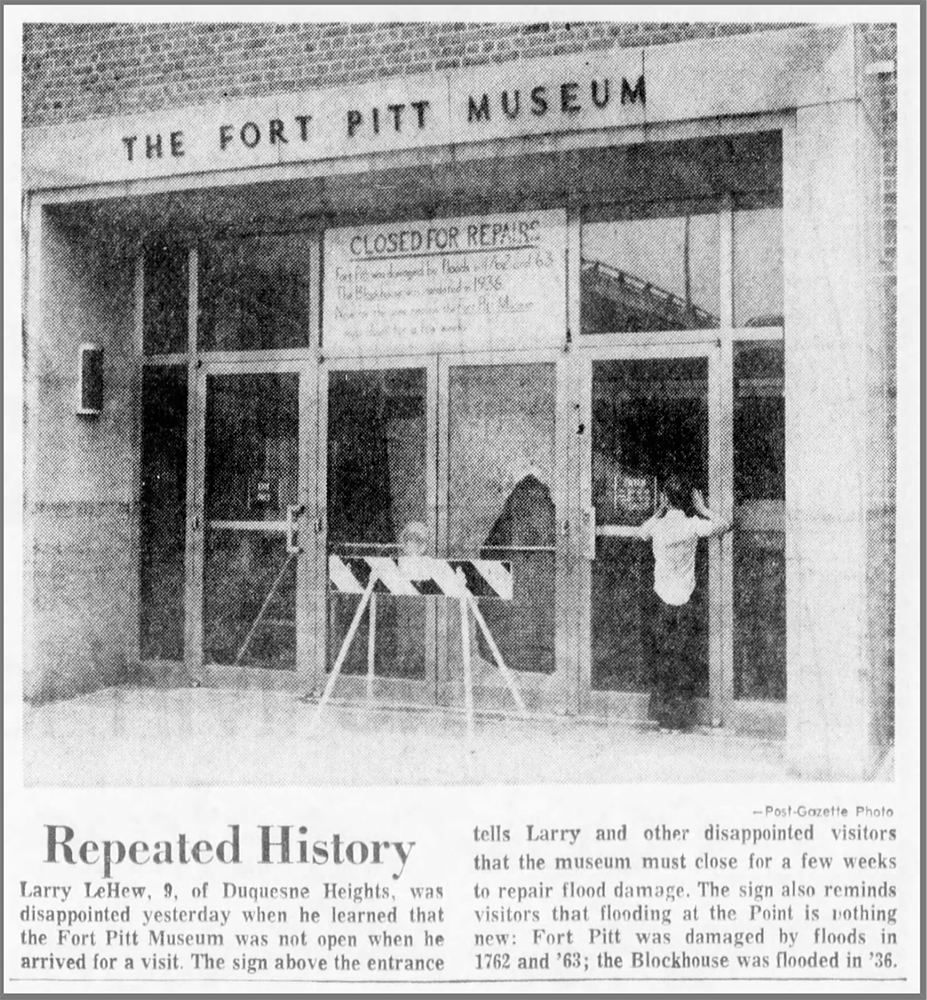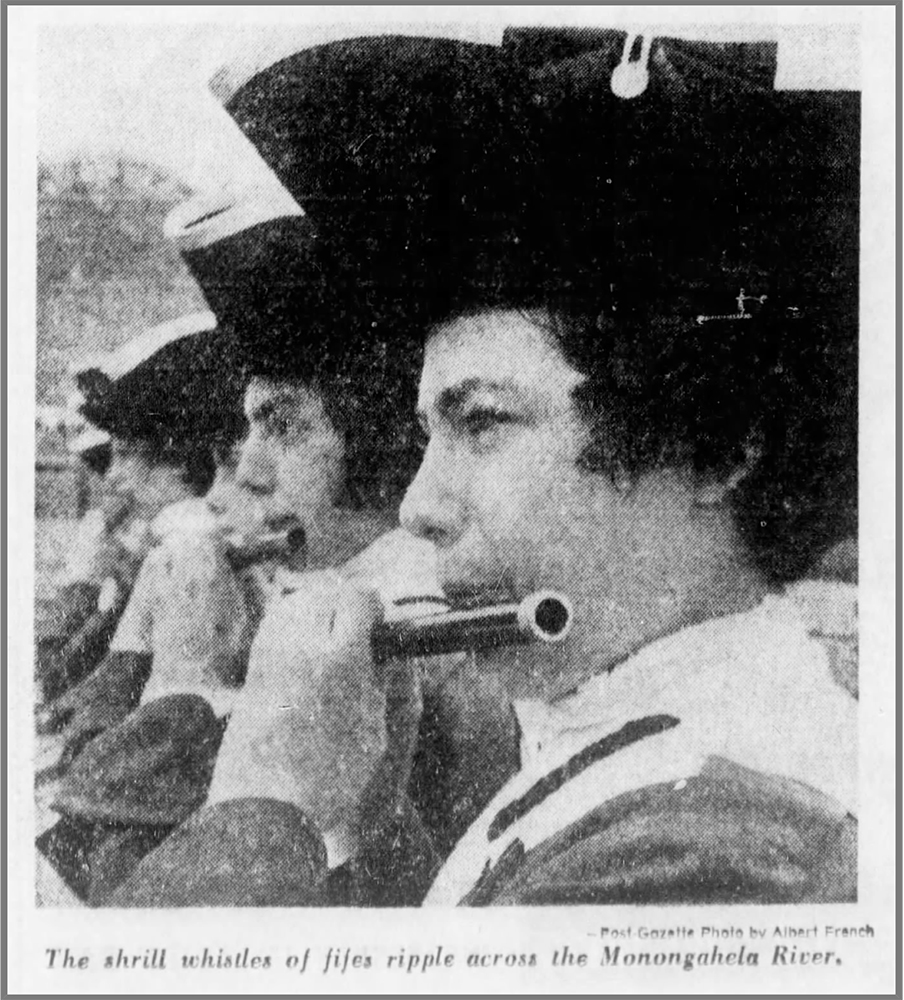City police rescued a Fort Pitt Museum watchman last night when flood waters trapped him inside the building. They had to break a glass in the door before he could get out.
– The Pittsburgh Press, Saturday, June 24, 1972
By 5 a.m. on Saturday, June 24, 1972, a flood caused by tropical storm Agnes had reached its 35.8-foot crest in Pittsburgh. After its inception off the coast of Yucatan on June 15, Agnes gained only minimal hurricane intensity and was downgraded to a tropical storm by June 19. Over the next four days, Agnes’ path covered Florida and Georgia, hit the Carolina coasts, derailed off land into the Atlantic, and made an unexpectedly sharp westward turn through Southern New York. Agnes then wreaked havoc on Central and Western Pennsylvania.


As detailed in a Natural Disaster Survey Report published by the U.S. Department of Commerce in 1973, Agnes resulted in a nationwide record of $3.5 billion in property damage. At the time, President Richard Nixon declared the event to be the worst natural disaster in United States history.
Only two floods in Pittsburgh history rank worse than Agnes: the St. Patrick’s Day Flood of 1936 and a flood on New Year’s Eve in 1942.
Fort Pitt Museum records indicate that when Agnes struck the Point, 45 inches of floodwater inundated the building. The museum was only a few years old at the time of the flood. The Pennsylvania Historical and Museum Commission opened Fort Pitt’s doors in 1969.

The photo and caption to the right appeared in the Pittsburgh Post-Gazette on Monday, July 3, 1972. Note the broken glass where the rescue of the watchman presumably occurred. The sign at the museum entrance announced that the museum was closed for necessary repairs and reminded passersby that high waters were nothing new to the area.
Due to structural damage, the museum remained closed to the public for nearly two years, reopening on May 19, 1974. Despite being closed for that long, the museum’s Royal American Fife and Drum Corps still maintained regular Sunday performances in Point State Park.
In honor of Independence Day in 1972, about one week after Agnes struck, over 100 spectators turned out to see the Fife and Drum Corps perform. The Pittsburgh Post-Gazette caption read: “The shrill whistles of fifes ripple across the Monongahela River.”

To this day, the Fort Pitt Museum, now operated by the Senator John Heinz History Center, incorporates the fife and drum tradition into its Living History programming.
It may surprise many that a fictionalized story about the museum and its Fife and Drum Corps during the flood of 1972 exists in the form of an adolescent mystery novel.
“Mystery in the Flooded Museum,” by Margaret Goff Clark and published in 1978, is built on the premise that the Fort Pitt Museum flooded and that someone indeed got trapped inside the building and required rescue. Fictional but intriguing events woven into the novel include a budding love story and the theft of a treasured 18th century wampum belt.
The book is no longer in print, but after nearly 50 years of history at the Fort Pitt Museum, it represents a quirky token of museum history. Perhaps it prompts one to wonder, “What else is in store for the Fort Pitt Museum?”
Jaclyn Sternick is the events coordinator at the Fort Pitt Museum.